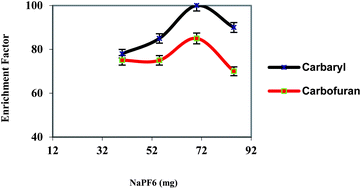Preconcentration and determination of carbaryl and carbofuran in water samples using ionic liquids and in situsolvent formation microextraction
Abstract
In the present work, a novel microextraction method named in situ

* Corresponding authors
a
Department of Chemistry, Science and Research Branch, Islamic Azad University, Tehran, Iran
E-mail:
drmsabertehrani@yahoo.com, givianradh@yahoo.com, leiliakhoundi@yahoo.com
Fax: +982144817146
Tel: +982144868449
b
Department of Chemical Engineering, Sharif University of Technology, Tehran, Iran
E-mail:
mah.iri@gmail.com
Fax: +982144817146
Tel: +9821440989804
In the present work, a novel microextraction method named in situ

 Please wait while we load your content...
Something went wrong. Try again?
Please wait while we load your content...
Something went wrong. Try again?
M. S. Tehrani, M. H. Givianrad, L. Akhoundi and M. Akhoundi, Anal. Methods, 2013, 5, 2406 DOI: 10.1039/C3AY00010A
To request permission to reproduce material from this article, please go to the Copyright Clearance Center request page.
If you are an author contributing to an RSC publication, you do not need to request permission provided correct acknowledgement is given.
If you are the author of this article, you do not need to request permission to reproduce figures and diagrams provided correct acknowledgement is given. If you want to reproduce the whole article in a third-party publication (excluding your thesis/dissertation for which permission is not required) please go to the Copyright Clearance Center request page.
Read more about how to correctly acknowledge RSC content.
 Fetching data from CrossRef.
Fetching data from CrossRef.
This may take some time to load.
Loading related content
